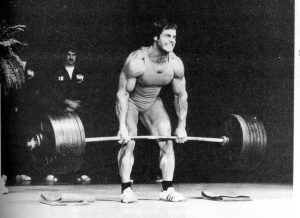I’ve been away for quite sometime. The last time I wrote an update was when I was still having hip issues and I got them straightened out with the help of a chiropractor. I had given thought to switching my lifting routine from Stronglifts 5X5 to Jim Wendler’s 5/3/1. The idea behind this change was to increase recovery time and to be less beaten up (squatting 200lbs 3 times a week is no joke at my body weight). However, I stuck around with Stronglifts for the better part of last month.

It’s been a little more than a year that I have been on this program and saying that I am satisfied would be an understatement. The program is amazing for anyone who has never touched weights in their lives; split routine training doesn’t mean touching weights (no offence to the aesthetic chasers). If the program wasn’t as good as it is, I wouldn’t have been on it for a year. Mehdi has done a good job creating a routine which will work for anyone.
Now if you are subscribed to the Stronglifts newsletter which Mehdi sends out everyday, you should have a pretty good idea of what the title of the post means. There was a time when he used to post videos of himself lifting pretty heavy stuff, no more though. All that is left of Stronglifts is the Stronglifts inner circle. The bottom of every e-mail from Mehdi begs people to join his inner circle of members. He also gives freebies to people who join. However, I reckon that it is a little excessive on his part to write in every e-mail “Doors are closed now but you can go here and sign up for early bird registration for my Inner Circle.” Some way or the other he always manages to link his stories to the inner circle as if the inner circle is the solution to every problem.
When he posted his videos of him lifting in his home gym, that was inspirational stuff. When I saw him for the first time, I thought I wanted to be like him. I believe he made a big mistake in marketing himself by changing his focus from posting videos to sending crappy e-mails. To be honest, I am still subscribed to his newsletter because his e-mails make me chuckle first thing in the morning. He has also shown his complete rebuttal of steroids and steroid users. He has called them cheaters and has gone as far as to prove it by citing some research studies. He also says that, “If you’re using workout gloves and using a foam pad (for squats), you are not really doing stronglifts.” I think there is a better way to convince people not to use workout gloves or foam pads. I also think it is a personal preference and nobody gives a shit about you telling them that they’re not doing your program because you said so.
Coming to the program, I think it is a fairly balanced routine.
Day 1 – Squat, Bench, Pendlay Row
Day 2 – Squat, Overhead Press, Deadlift
Work out three times a week alternating between day 1 and day 2 workouts with 5 sets of 5 reps on each lift except the deadlift which is 1 set of 5 reps. There is push, pull movements for the shoulders – the bench and the pendlays. There is a push movement overhead but there isn’t a pull movement. I think if you’re doing stronglifts you should also do pull ups/ chin ups if you want to keep your shoulders balanced.
So much for the praise of the program. Even though the program is simple to follow, there is very little information about how to properly do the lifts without getting injured. Here is where the marketing gimmick called the Stronglifts Inner Circle comes into the picture. Mehdi says that if you join the Inner circle, you can post videos of your lifts and get instant feedback about your form from other members which will help you be injury free.
First of all Mehdi, there is only so much you can see in a video. Secondly, are those members of your inner circle all personal trainers? Are they certified to provide feedback? I don’t think providing feedback is wrong. But if you are selling the membership to your inner circle to people to help themselves, then you’re making money out of nothing. You have just created a forum for people to interact with each other. There are websites like Fitocracy which do the same thing and for free. One can also post videos on youtube and have someone on facebook look at them. Why would anyone in their right mind pay for membership of a forum in which you ask questions from people who aren’t even certified to answer them?
In any case, he has done a good job making the program from Bill Starr’s/ Reg Park’s 5X5 program. However, he has not marketed himself correctly. From a stronglifter he has become a gatekeeper who does nothing except opening and closing the gates of his Stronglifts Inner Circle. Good luck to you Mehdi. May you achieve what you set out to achieve.

